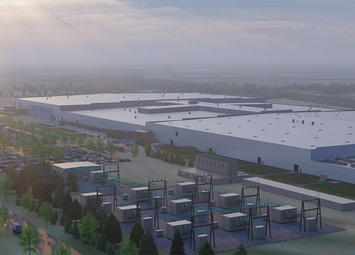
Remember how states and cities breathlessly pursued Tesla’s battery “gigafactory” in 2014 and Amazon’s “HQ2” in 2018? In the 1980s, localities went after General Motors’ Saturn project with much the same ardor before the “revolutionary” initiative landed in Spring Hill, Tennessee.
Here’s hoping that the new revolution GM is bringing to Spring Hill – in the form of a just-promised new EV-battery plant – goes much better than the first one did. Saturn didn’t work out anything like the automaker hoped, or promised, even after forever changing the once-sleepy hamlet south of Nashville.
Those who were there at the inception of Saturn in the early 1980s remember that the fervor surrounding GM’s $5-billion new initiative had much the same evangelical feel its commitment to battery-electric vehicles now entails. GM’s CEO at the time, Roger Smith, pledged to dislodge the Japanese from their growing dominance of the U.S. small-car market. The company even went so far as to describe Saturn as the private-sector equivalent of the moon landing.
Not surprisingly, politicians and just about anybody else they could buttonhole to help tried their utmost to land Saturn in a months-long frenzy surrounding the most sought-after industrial development of the 1980s. As the nation was still trying to crawl out from the shadow of the early-decade recession, the kind of fiscal and jobs bounty promised by Saturn would be an almost-unimaginable plum.
Governors appeared on Phil Donahue to make their pleas, James Risen wrote in the Los Angeles Times. Chicago, Iowa, Missouri and Youngstown, Ohio, were among hopeful locales that paid for recruiting billboards along Detroit’s freeways. Newspaper reporters searched garbage cans in the back of GM office buildings for hints about where Saturn would land, Risen found.
In the end, GM selected Spring Hill for Saturn. Thirty-six years ago, the announcement that GM was going to put Saturn there hit mid-Tennessee like news of an alien craft landing. Suddenly, bucolic farmland that was worth only hundreds of dollars an acre was fetching many times that amount as GM, suppliers and speculators bought it up.
One notable such beneficiary was Peter Jenkins, an author who’d become renowned for trekking across the country on foot for his book, A Walk Across America. I visited Jenkins at his Spring Hill farm as he marveled at his good fortune, not only seeing the value of his real estate rise exponentially but also being able to witness the writer’s dream of a phenomenal story of transformation unfolding literally at his front door.
Hype was high even after GM whacked the size of the planned Saturn project in two. (Reporting on that story and others helped me and a couple of other Wall Street Journal reporters garner a Pulitzer Prize nomination from the newspaper.) In 1985, GM broke ground on the new plant, and by 1990, the first Saturn SL2 rolled off the line in Spring Hill with the promise that it would change the world.
But if Saturn was a moon shot, it was more like the ill-fated Apollo 13 of 1970 than the Apollo 11 that landed the first man on the moon in 1969. Aside from some manufacturing efficiencies and dent-resistant exterior panels, Saturn simply wasn’t very innovative – and certainly fell far short of derailing the Japanese small-car juggernaut that was gobbling up market share in the U.S. from GM and other domestic makes. GM finally pulled the plug on the Saturn brand after the economic crash of 2008 and the company’s 2009 bailout by American taxpayers. During the subsequent recovery, GM began making SUVs at the plant.
Last week, GM announced the planned construction in Spring Hill of its second battery-cell plant to support the transformation of its vehicle portfolio with battery-electrics in the next 15 years. The automaker’s joint venture with LG Chem, Ultium Cells LLC, plans to spend $2.3 billion to build the plant on land leased from GM, creating 1,300 new jobs and supplying batteries to the BEVs the company plans to make at its adjoining assembly plant.
Read the rest of this piece at Flyover Coalition.
Dale Buss is founder and executive director of The Flyover Coalition, a not-for-profit organization aimed at helping revitalize and promote the economy, companies and people of the region between the Appalachians and Rockies, the Gulf Coast and the Great Lakes. He is a long-time author, journalist, and magazine and newspaper editor, and contributor to Chief Executive, Forbes, the Wall Street Journal, the New York Times and many other publications. Buss is a Wisconsin native who lives in Michigan and has also lived in Texas, Pennsylvania and Florida.
Photo credit: Ultium Cells, LLC












